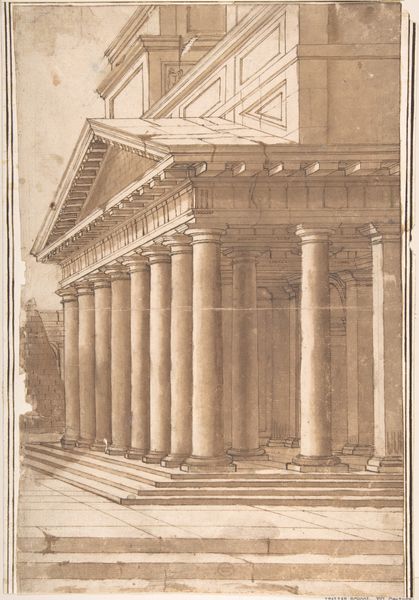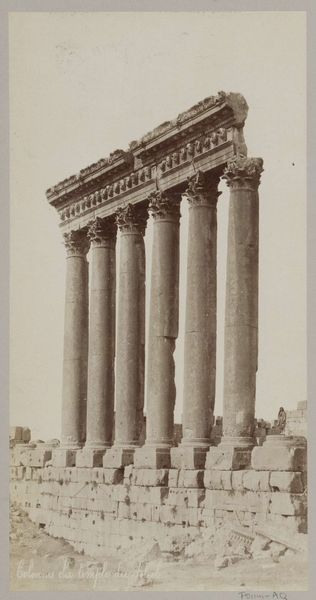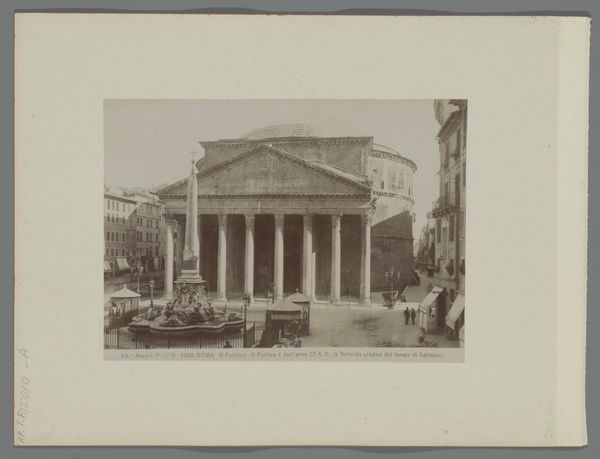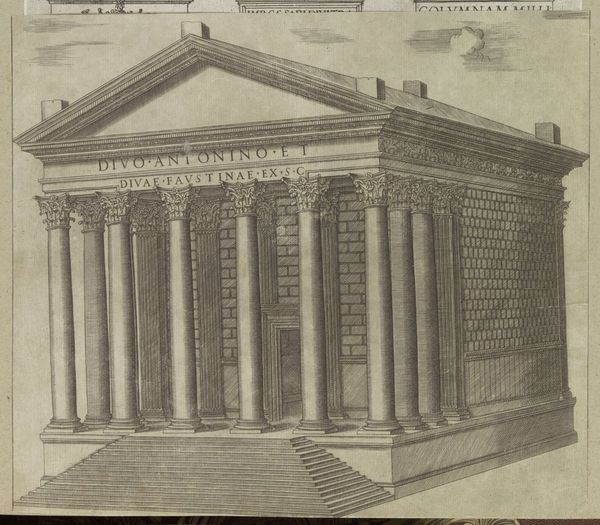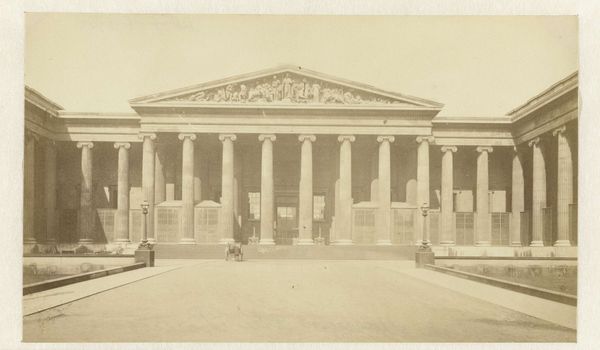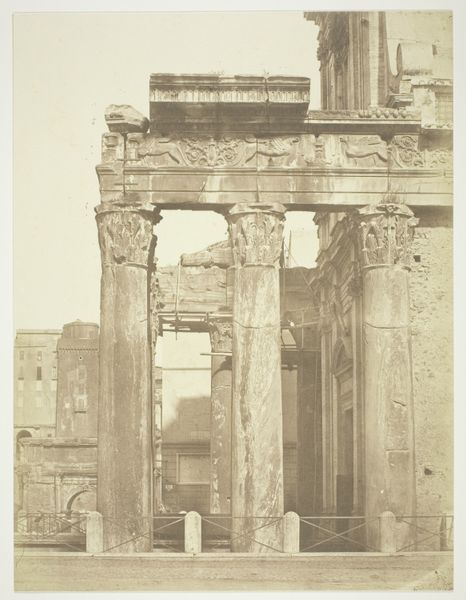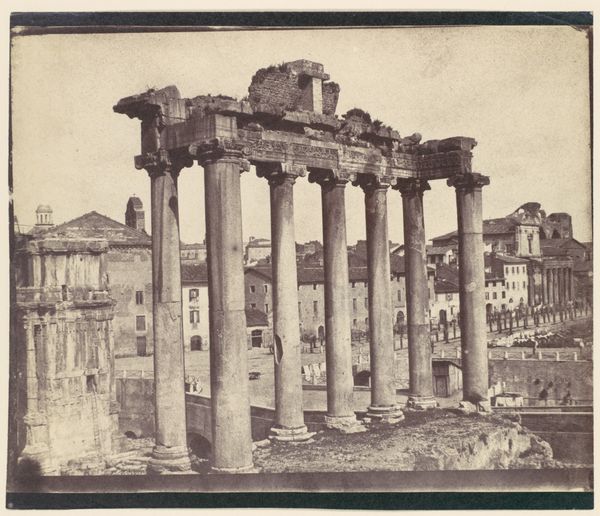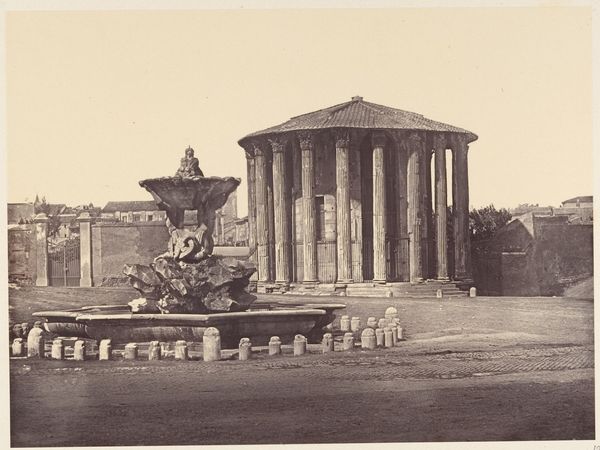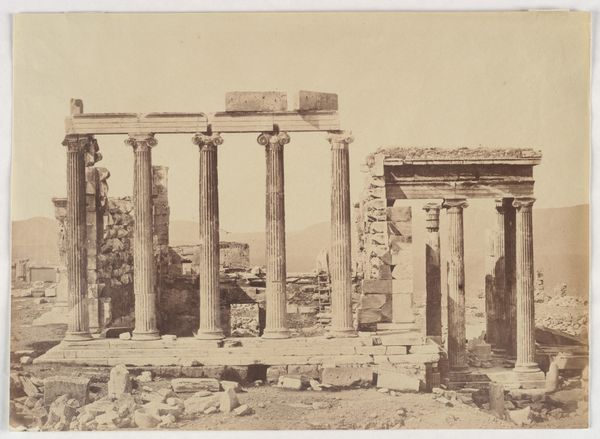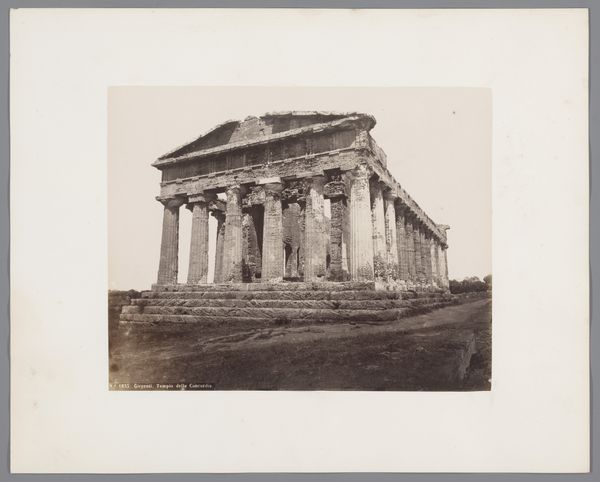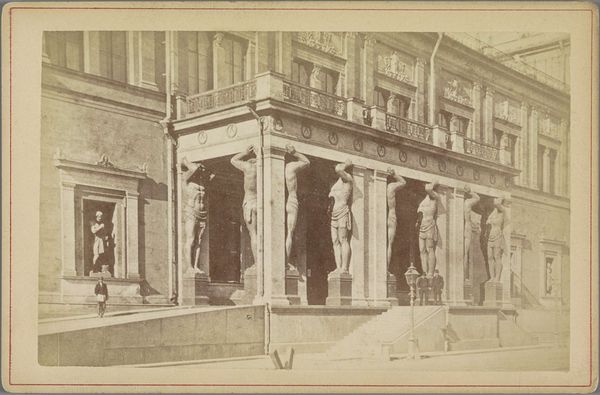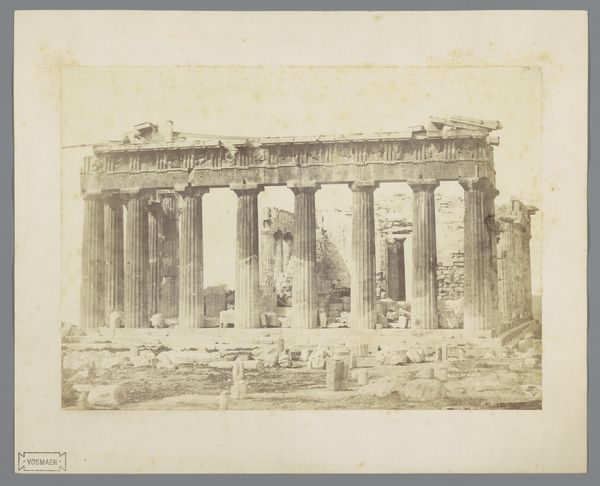
print, daguerreotype, photography
#
16_19th-century
# print
#
landscape
#
daguerreotype
#
photography
#
ancient-mediterranean
#
cityscape
Dimensions: 30.9 × 39.8 cm (image/paper); 40.7 × 45.5 cm (mount)
Copyright: Public Domain
Editor: Robert MacPherson's "Untitled (San Stefano en Rotundo)," a daguerreotype from around 1857, is striking. The muted tones lend a certain timeless quality. It depicts what looks like the Pantheon in Rome, but how should we read it beyond just a documentation of architecture? Curator: MacPherson’s photograph isn't simply a record; it's an assertion of the medium’s power to represent cultural heritage. In the mid-19th century, photography became intertwined with the rise of tourism and the preservation of historical narratives. Consider how images like this, circulated widely, shaped perceptions of Rome as the 'eternal city,' ripe with historical and artistic significance. What impact would the circulation of these images have at the time? Editor: I guess, access to accurate images like these might democratize access to art and culture, beyond who can travel and see it firsthand. Curator: Exactly! Photography allowed for a democratization of art viewing but also served colonial interests and the construction of national identities. By capturing Roman antiquity, photographers reinforced Europe’s connection to a classical past and underscored contemporary European power structures. The very act of photographing and distributing images of historical monuments reflects this power dynamic and impacts public perception. Editor: So, it’s less about the pure artistry of the photo and more about how the image functioned within the society of the time. Does that shift the importance we place on it, as viewers today? Curator: Precisely! Our appreciation extends beyond aesthetics. Understanding the social and political forces shaping the photograph deepens our appreciation. MacPherson’s work reminds us that images always participate in larger cultural conversations, often reinforcing dominant ideologies. Editor: That's fascinating. I’ll never look at historical photographs the same way again.
Comments
No comments
Be the first to comment and join the conversation on the ultimate creative platform.
